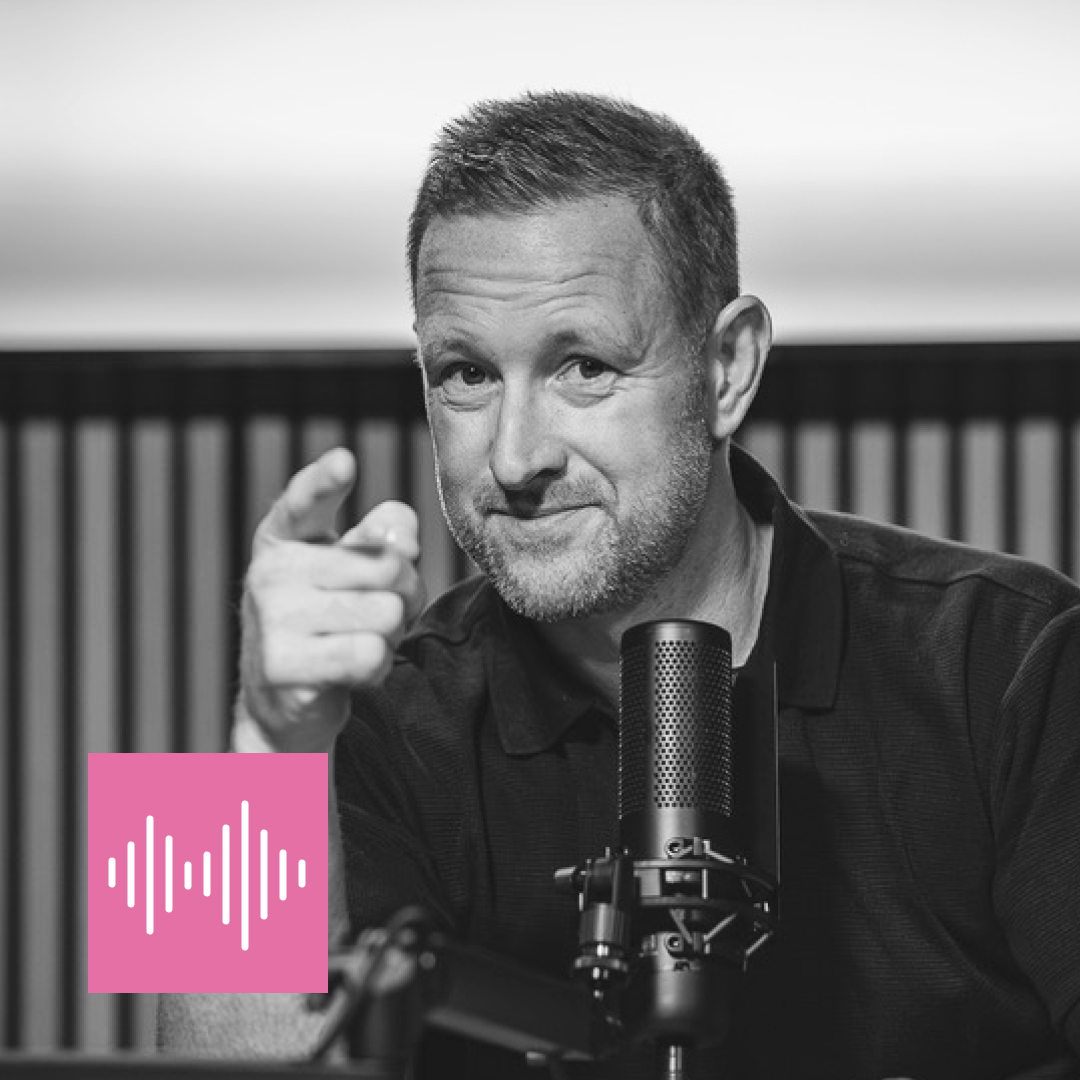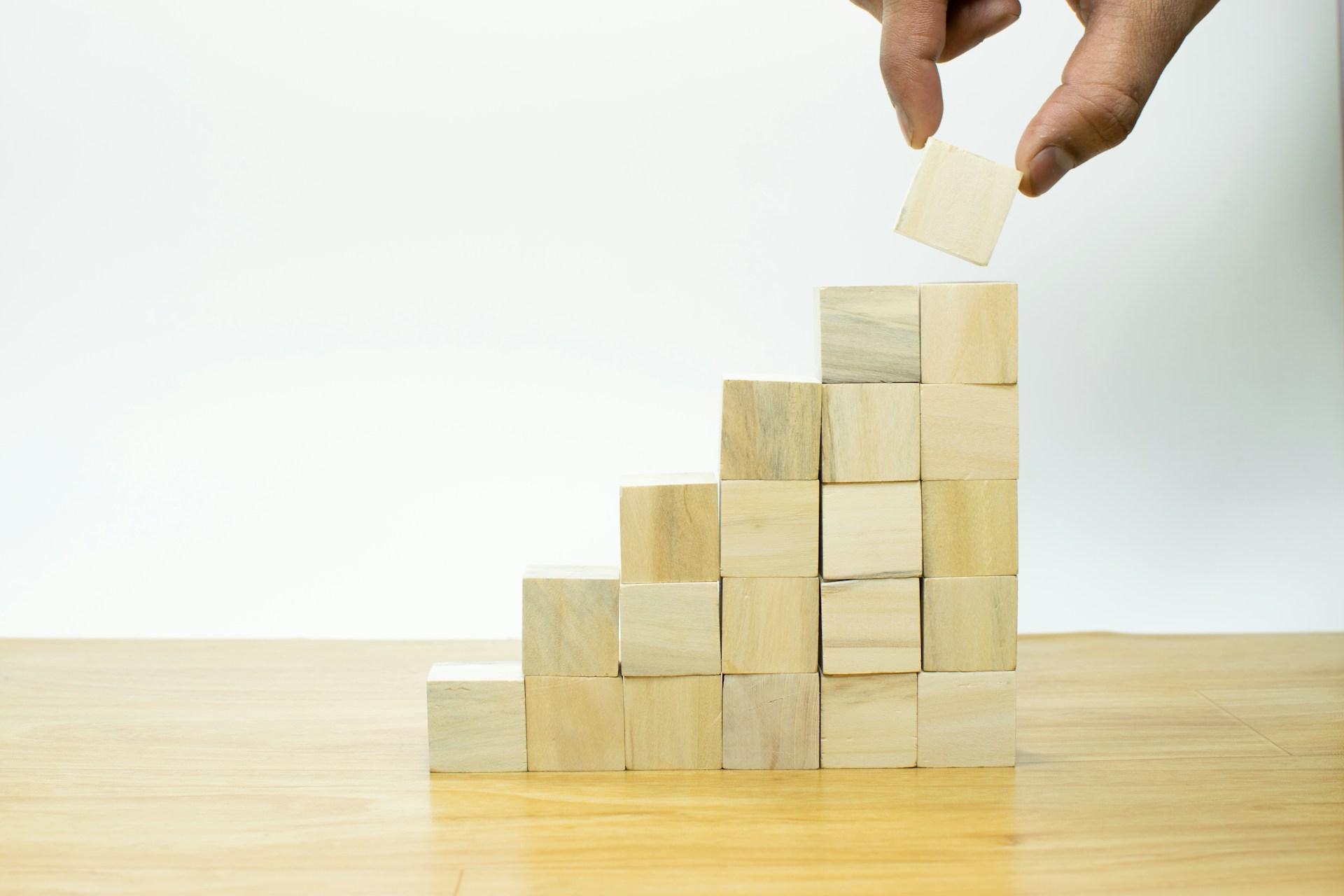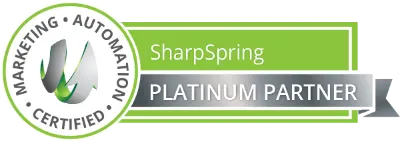Speakers:
Lars Dahlberg — Host, Sälj- och Marknadspodden
Daniel Brazier — Guest, Video Producer
Lars: Hej och välkomna till ännu ett avsnitt av Säljmarknadspodden från Business Reflex. Det här är podcasten för dig som vill ha ny inspiration och kunskap om hur man marknadsför och säljer till den moderna business to business köparen. Jag som sitter I studion idag heter Lars Dahlberg. Det här avsnittet kommer vi att leverera på engelska. Det beror nämligen på att min kära gäst som jag har bjudit in i podden om en liten stund, han jobbar fortfarande på att öva på sin svenska.
Lars: I’ll switch over to English. Before we introduce our speaker today, I’d like to set the scene for this episode. Many B2B marketing and sales organizations are struggling to find a modern recipe for growth and efficient go-to-market. There are so many options and opportunities, but one approach that hasn’t really been used enough is running live streams on LinkedIn.
Lars: Live streaming on LinkedIn has huge potential—combining those two is powerful. So I’ve invited a true professional who knows a lot about this and can hopefully inspire you and teach you how to do it.
Lars: Welcome, Daniel Brazier.
Daniel: Hello, Lars. Pleasure to be here.
Lars: It’s a real pleasure to do this podcast with you. Today is all about LinkedIn live streaming and video. We’re recording this podcast with video as well.
Daniel: That’s right—that’s my bread and butter, Lars: video and live streaming. It’s what I do every day for companies in Stockholm and across the Nordics.
Lars: It’s great to visit you and experience what it’s like to record a podcast in a truly professional environment.
Daniel: Thank you. We moved studios about four months ago, and it’s nice to have everything in one place. We can be super-efficient with the equipment and all the gear behind the scenes to make great broadcasts.
Lars: Let’s dive into today’s topic. Daniel, you’ve done a lot of live streaming and LinkedIn-related video. Why is the combination of LinkedIn and live streaming such a great fit right now?
Daniel: There are many reasons, and my favorites change week to week, but the big one is the sheer amount of AI-generated content in our feeds. We’re all seeing LinkedIn change. These tools are dominating. I see live streaming as an antidote. AI content is amazing and useful, but do we lose authenticity? Live streaming restores that—your message and business communications feel real and build trust with customers.
Lars: Exactly—trust is key. Another important reason: companies have brands, but when you work with live video on LinkedIn, you bring people from your organization—the personal brands—into the foreground. That’s far more effective for building trust and thought leadership. You put your people in front of your audience.
Daniel: Yes. When you go live with your team, you showcase the people who make up the brand. There’s a tendency in marketing to hide the people, and live streaming gives you a chance to tell individual stories and how they align with the goals of the business. It’s like a conference expo with beautiful stands but no people—something’s missing. You need people to communicate the mission, purpose, and objectives. LinkedIn Live gives you that format.
Lars: What about the younger generation who are becoming more important as B2B buyers and professionals? They come from video.
Daniel: They do—video first, and now live video first. If you take that demographic seriously—and you should, because there are many of them entering their thirties and forties—you need to communicate in formats they’re comfortable with. We’re all time-starved, and short videos or short live streams—five to ten minutes—can be a better way to get your message across than hefty PDFs or long emails. As always, good marketers think intensely about the audience. There’s more need than ever to communicate via video.
Lars: Live streams and video are good in general for that generation. And when they start working professionally in B2B, it’s natural for them to join LinkedIn and become active there.
Daniel: Yes—and they often have a history of being very active on other social platforms. They bring that value to LinkedIn as they get older. But, if I can contrast that: the older generation actually needs to step up. There’s a huge bank of knowledge and experience locked away. It’s time for baby boomers—often on company boards—to put themselves forward for live broadcasting, whether LinkedIn Live or even TikTok Live. That generation needs to get comfortable with video and accept the reality that video—and now live—is very important.
Lars: We’ll talk more about how to overcome those challenges—especially for that generation—because they often see obstacles in doing what we’re talking about. Before that, what types of live streams can companies do?
Daniel: It’s very broad. One thing I coach clients on is to imagine your business as a late-night TV show. You already have an audience—if your LinkedIn has two, three, four thousand followers, they’re waiting for you to educate or entertain them. The opportunity is to broadcast your knowledge in that format.
Lars: I agree. You can do inspirational content—make people think differently—and educational content—teach them something new.
Daniel: “Educate” is the best mindset. If you’ve been in your career four or five years, you’re quickly an expert in your domain. You have something to share, even if you don’t think so. During the pandemic we all did countless Teams and Zoom calls; while they weren’t public, the format is the same. Many people are ready for live streaming and don’t realize it. On LinkedIn specifically, your employees’ combined followers can be huge—add them up and you might have 100,000 people in your first-degree network. That’s like being invited to a conference with 100,000 in the audience. Any company would jump at that—and pay for it—yet you can do it on a Monday afternoon by going live on LinkedIn.
Daniel: We’ve done small-scale streams, and we’ve also gamified an industry—something we’re proud of. A small idea became a global franchise, a bit like X-Factor. We worked with Logitech and created a live competition for their resellers—AV installation companies—who competed to assemble a theoretical meeting room. We set up stations and live streamed it to all their followers, friends, and family. It was a huge success. Logitech has taken it to Dubai, we filmed in Barcelona earlier this year, and we’ve been to Brussels, the Netherlands, and London. Anything’s possible—anything you’ve done in marketing and more can be translated into a live format and presented on LinkedIn or YouTube, wherever your customers are.
Lars: That kind of strong story lets B2B organizations build a community quickly—if you do it again and again. You need to educate and entertain.
Daniel: If you can educate and entertain, that’s the sweet spot. Learning with a smile sticks. Every company can find that—even the “boring” ones. Look at the Microsoft Excel World Championship—it’s like a UFC competition for spreadsheets. They invest millions, and Excel geniuses compete in an arena. Any business can ask: how do we gamify something we can broadcast live to our network?
Lars: That’s a high-level example. Before that, you have to start. If we go back to doing live streams on LinkedIn, what are the main benefits for a traditional B2B company?
Daniel: Algorithms across platforms—including LinkedIn—favor live content over other formats. These platforms are moving toward more live broadcast because that’s where clicks—and ad revenue—are. So you can seize an algorithmic advantage. Also, many companies sit on thousands of page followers and underuse them—posting job ads and the odd flat company article. They don’t realize the potential.
Lars: And many have done webinars on standard platforms like Teams or Zoom. But when you do it on LinkedIn, it opens up a big opportunity you don’t get with traditional webinar tools.
Daniel: Exactly—organic traffic is there. When you set up a LinkedIn Live event weeks ahead, people register—yes, that can generate leads—but they also help you spread the word organically. Asking live viewers to share the stream as it’s happening is a great tip. It tells the algorithm something is happening. LinkedIn’s tools are phenomenal—you hit “repost” while watching and it goes straight to your feed, so your followers see it. If your company has a thousand employees and you ask them all at 11:00 on Monday to repost, you can get tens of thousands in potential organic reach—for free.
Lars: The power of that becomes obvious the first time, even with 50 attendees. Do it consistently and the snowball starts rolling.
Daniel: Right. The first time is nerve-wracking. You might have 200–300 registrants, you don’t want to keep them waiting, and there are crew, a host, guests—many moving parts. But when it’s over, it’s a rush. Like a muscle, it gets easier. By the fourth or fifth one, people settle into a process.
Lars: Another thing many don’t realize: after you go live, the stream stays on LinkedIn, so you can promote it afterward. People can easily watch the recording and the content keeps delivering trust for your brand.
Daniel: Exactly—instant impact. That’s why I like the “late-night show” idea: you can talk about topics happening in your industry that day, break news, or announce a product—first mover advantage. With produced video you might wait weeks for edits, approvals, legal, etc. With live, it’s out there doing its thing.
Lars: I think our listeners see the potential, no doubt. But there are challenges. We’ll add links in the show notes to great examples of B2B live streams so you can see what others are doing—including your gamified franchise that’s now going global.
Daniel: Yes—we’ll include those.
Lars: Let’s talk challenges. Imagine I’m a B2B marketing manager, sales manager, or CEO who wants to step up and do LinkedIn Live. What do I have to overcome?
Daniel: First, the technical elements—hardware and software need to come together so the broadcast is on time and professional. You can build that in-house if someone wants to invest the time, but we recommend working with a specialist to take the heavy lifting so you can focus on content. You need proper microphones, lighting, and on-screen assets to look professional.
Lars: And the actual streaming setup.
Daniel: Yes. There are many platforms. It’s easy to make mistakes. We use a thorough pre-live checklist because there’s always some switch or setting. There’s a lot that needs to be right.
Lars: I’ve tried to set it up myself. It’s more complicated than you expect, and the equipment needs are more challenging than you think.
Daniel: Exactly. You might find someone internally who live streams in their personal time—a gamer, for example—as a starting point. Or reach out to a company like ours to handle the production so you can focus on the material and amplification. That’s a good team mix.
Lars: The next challenge is content design and getting people willing to “perform.” Many don’t mind presenting to customers or internally, but sitting in front of a camera live—creating content for that—feels like a big hurdle.
Daniel: True. Often they’ve been forced into what I call a “hostage video” at some point—marketing asks them to sit under bright lights and recite corporate lines. It’s not authentic and it puts people off camera work.
Daniel: I coach them back: you’ll be on camera talking about what you know and love, what you do every day. No script. Share success stories, challenges you overcame, in a conversational format—like we are now. Then people realize, “I can do that.”
Lars: The key is to find someone who truly represents the topic—passionate and knowledgeable. Most B2B organizations have plenty of such people. Then you co-create the story and structure with them so it feels like their content. That’s when the magic happens.
Daniel: And Lars, you’re very good at hosting these discussions—you make it look easy, but you prepare. Hosting is like conducting an orchestra: keeping focus and helping guests along. That’s a good tip for others, too.
Lars: To make people comfortable, we start with their ideal customers and personas—key challenges, ways to inspire them, and things we can teach that might eventually lead to buying our products or services. Build the story from there. It’s usually good to have two presenters so the responsibility is shared for 15–45 minutes. As people get more comfortable, they can work together like you and I are now. Practice helps. We often rehearse in a room with me, no audience, then switch the camera on and deliver.
Daniel: That ties back to baby boomers and Gen X: they’ve done their 10,000 hours of conversations. They’re experts at talking. We’re just asking them to share their domain knowledge with an educational tone and deliver value quickly.
Lars: We also use a host for the live event to set the scene, introduce speakers, ask questions, and involve the audience via chat and Q&A. That makes it easier for internal subject-matter experts.
Daniel: We’ve even hired third-party hosts—and sometimes comedians—to keep the tone light and conversational.
Daniel (continued): A tip: do proper prep and screen your host. A few times we started recording and realized the host wasn’t a good fit; we had to pause and swap in a different host to save the production. The host doesn’t need deep industry knowledge, just strong conversational skills and preparation to liberate the educational content from the guests.
Lars: Once someone has delivered a good session—maybe two people—they often become passionate about doing more and inspire others internally. The first hurdle is the biggest.
Daniel: Exactly—like stepping on a conference stage. It feels great afterwards.
Lars: You also get great audience feedback from live streams, which is motivating.
Daniel: Yes—live feedback in the comments is unique. The host can address questions during the broadcast or at the end. I’ve even seen people meet and connect in the comments—very powerful.
Lars: A question on quality. Everyone wants great quality, but budgets vary. Too low and people won’t pay attention—especially on LinkedIn. How do you strike the balance?
Daniel: It’s tough, but I always say: done is better than perfect. Publish and iterate. Speed matters. What I love about live is there’s no limbo—it’s instant. It won’t get stuck between marketing and legal for weeks. Also, you don’t want it to be too perfect. Small mistakes authenticate that it’s live. Bloopers go viral for a reason—people connect with human moments. If you’re genuine and honest, audiences give you a wide bandwidth.
Lars: For a typical B2B LinkedIn Live, sound quality is critical. Good lighting helps a lot. A studio setting where speakers sit together gives a stronger “show” feel than everyone in separate offices.
Daniel: Agreed. LinkedIn is visual as well as audio. Good “thumbnails” or opening frames help clicks, and the autoplay shows your quality. If you put effort into a high-standard broadcast, people are more likely to watch. The good news is the tech has improved so much that we can deliver high-quality live streams at far lower budgets than five or ten years ago. And once you have the setup, it scales—weekly or monthly shows build an audience that expects you live at a set time.
Lars: Another quality tip: switching between speakers-on-camera with slides, speakers-only, and other mixes adds a lot to the viewer’s experience.
Daniel: Absolutely. Every Christmas for the last three years we’ve run a one-hour live with sponsors, aligned with Melodifestivalen here in Sweden. We had live singing, live shopping, a podcast segment, and a remote guest—very dynamic, like a TV show. This is available to companies now; it’s more affordable than people think.
Lars: To wrap up, we like to give tangible tips. If I haven’t done LinkedIn Live before—maybe only simple webinars, or none at all—how do I get started?
Daniel: Borrow from Nike: just do it. Try it, and you’ll be surprised. Work with a partner if you can; it makes things faster and more relaxed. Don’t overthink it—brainstorm with your team and you’ll quickly land on educational content. When you take that mindset, topics fall from the tree like apples.
Lars: Exactly—talk about your clients and personas, their big problems, and what’s relevant for them. Stay niche.
Daniel: Yes—stay niche. Do an episode on a very narrow subject. Don’t try to do too much in 10–15 minutes. Deep-dive into an element of your business or product.
Lars: Bring in someone passionate from the organization and help them deliver it—then let it evolve.
Daniel: That’s it.
Lars: Thanks, Daniel—lots of content today. I really hope people try this out. And to our audience: as usual, stay relevant.






